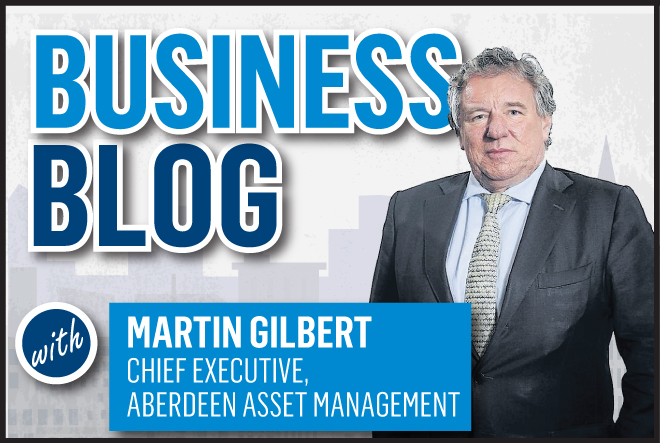I was shocked and saddened to hear of the suicide of Martin Senn who, until last December, was CEO of Zurich Insurance, having led the company for five years. His death was a double tragedy for Zurich, after its chief financial officer, Pierre Wauthier, took his own life in 2013.
These events are a reminder of the stress that can affect executives at all levels of business and a wake-up call to boards on the need to promote the mental health and well-being of employees.
In the first place, it’s a matter of common humanity and our moral responsibility to look after colleagues. But businesses are beginning to understand that promoting well-being in the workplace makes good economic sense too. Every company depends on its people and that means looking after their mental as well as physical health. It’s the right thing to do.
Across the UK workforce, one in six employees is currently experiencing mental health problems. The number of sick days lost due to “stress, depression and anxiety” increased by 24% between 2009 and 2013, according to a report from the chief medical officer.
Those figures conceal another problem identified by psychologists: “presenteeism”, when employees who are unwell force themselves to turn up for work and then underperform, to the detriment of their company.
Obviously the slowdown in the global economy has contributed to the problem. Redundancies provoked many mental health crises, but there is also much anxiety and depression among those still in the workforce. The solution lies in identifying colleagues who need help, taking active measures to support them and abolishing the unjustified stigma that for too long has attached to mental health issues.
Businesses are increasingly confronting their responsibilities and putting proper employee support mechanisms in place. In the US the number of firms running schemes to promote employees’ well-being has more than doubled over the past 20 years, to 74%.
In Britain business is also getting its act together, with a number of important initiatives. Among these is the Time to Change Employers’ Pledge, which I was happy to sign on behalf of Aberdeen Asset Management. More than 400 employers have now signed this pledge to take action to tackle the stigma and discrimination attaching to mental health, especially in the workplace.
Each signatory company has submitted an action plan outlining the measures we’re putting in place. At Aberdeen AM we have created a Mental Health Working Group which had its first meeting last month and was well attended. We are currently reviewing our human resources policies to ensure they reference mental well-being and are supportive of employees with problems. We aim to provide line managers and employees with access to support and guidance if they experience mental health issues and to create a communication strategy.
With business waking up to the importance of employees’ mental well-being, policymakers need to do the same.
At present mental health receives approximately 10% of the NHS budget in both Scotland and England although it counts for more than double that in terms of the overall health burden. This is clearly a subject that requires much more attention which is why I have signed the Equality for Mental Health statement, calling on Government to end the Cinderella status of mental healthcare within the NHS. With business waking up to the importance of employees’ mental well-being, policymakers need to do the same.
As in all areas of health, prevention is better than cure. While it’s good to see firms putting safety nets in place to support employees who suffer mental health problems, the culture of the company is significant. If the culture is collaborative, transparent and facilitates communication employees are much less likely to fall ill – however if they do, they need to know they have the support of the company while they get better.
A flawed culture, with executives inaccessible and uncommunicative, will foster a climate of anxiety damaging to the well-being of employees. A good work-life balance should be maintained. Hard work is good, but becoming a workaholic is not – for either the employee or the company. Participation in sports and local community activities is one good way of remaining well-grounded in a challenging career.
Colleagues should discreetly watch for symptoms of mental stress and tactfully provide support. Sometimes a hand on a shoulder and the offer of a chat over coffee can make all the difference.
Above all, the stigma associated with mental health problems must be consigned to history. Mental illness should no more be a cause for shame than a sprained ankle. That’s the approach that will make the workplace a healthy, congenial and wealth-creating environment.










